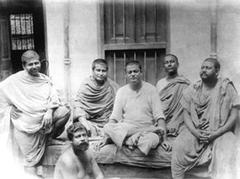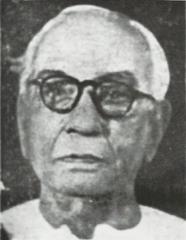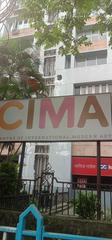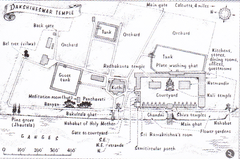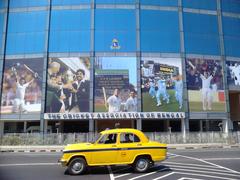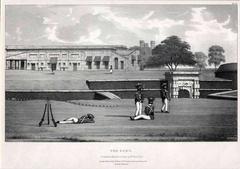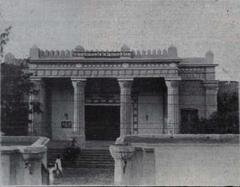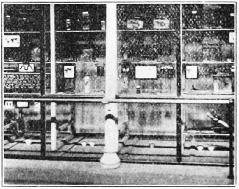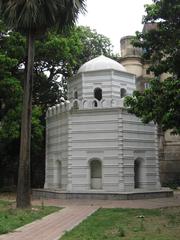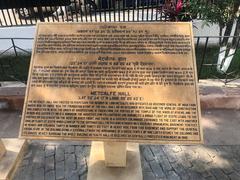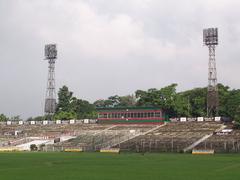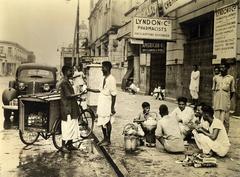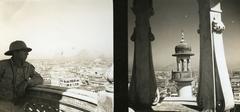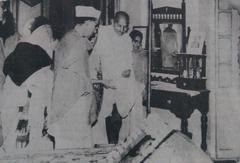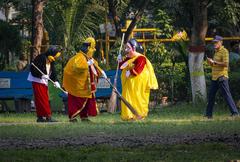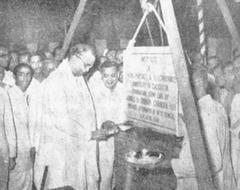Guide to Visiting Anaconda in Kolkata, India
Publication Date: 16/07/2024
Introduction
Nestled in the heart of Kolkata, India, the locality of Anaconda stands as a testament to the city’s rich history and vibrant cultural fabric. Initially developed by the British East India Company in the late 18th century, Anaconda played a pivotal role in the expansion and modernization of Kolkata, then known as Calcutta. The area is renowned for its mix of colonial and indigenous architectural styles, with landmarks like Anaconda House and St. John’s Church offering glimpses into its storied past. Today, Anaconda is a bustling neighborhood that retains its historical charm while embracing modern development. This guide aims to provide comprehensive information on visiting Anaconda, including its history, cultural significance, ticket prices, visiting hours, travel tips, and nearby attractions. Whether you’re a history buff, culture enthusiast, or casual traveler, Anaconda has something to offer. For more detailed travel guides and updates, you can download the Audiala mobile app or follow us on social media.
Contents
- Introduction
- History and Significance
- Early History
- Colonial Influence
- Post-Independence Transformation
- Visitor Information
- Visiting Hours and Tickets
- Travel Tips
- Cultural Significance
- Architectural Heritage
- Economic Impact
- Educational Institutions
- Social Fabric
- Modern-Day Relevance
- Future Prospects
- FAQ
- Conclusion
History and Significance
Early History
Anaconda, a locality in Kolkata, India, has a rich historical tapestry that dates back to the colonial era. The area was initially part of the larger urban development plans laid out by the British East India Company in the late 18th century. Kolkata, then known as Calcutta, was the capital of British India until 1911, and Anaconda played a significant role in the city’s expansion and modernization efforts. The British established numerous administrative buildings, residential quarters, and commercial hubs in and around Anaconda, making it a focal point of colonial administration.
Colonial Influence
During the British Raj, Anaconda became a melting pot of cultures, with European, Indian, and other Asian influences converging in the area. The British constructed several iconic buildings, many of which still stand today as heritage sites. These structures are characterized by their colonial architecture, featuring grand facades, intricate woodwork, and expansive courtyards. The area also saw the establishment of several educational institutions, churches, and clubs, which were integral to the social fabric of the British expatriate community.
Post-Independence Transformation
After India gained independence in 1947, Anaconda underwent significant changes. The area saw a shift from being a predominantly European enclave to a more diverse and inclusive neighborhood. Many of the colonial buildings were repurposed for governmental and public use. For instance, the former British administrative offices were converted into government buildings, while some of the residential quarters were transformed into public housing and community centers. This period also saw the rise of local businesses and markets, contributing to the economic growth of the area.
Visitor Information
Visiting Hours and Tickets
Anaconda’s historical sites and cultural centers are generally open from 9 AM to 5 PM on weekdays and 10 AM to 6 PM on weekends. Admission to most sites is free, but some places like the Anaconda House Museum may charge a nominal fee of INR 50 for adults and INR 20 for children. Special events and exhibitions may have different pricing, so it’s advisable to check the official websites for the latest information.
Travel Tips
- Best Time to Visit: The best time to visit Anaconda is during the winter months (November to February) when the weather is pleasant.
- How to Get There: Anaconda is easily accessible by public transport, including buses and taxis. The nearest metro station is Park Street.
- Nearby Attractions: Don’t miss nearby attractions like Victoria Memorial, St. Paul’s Cathedral, and the Indian Museum.
Cultural Significance
Anaconda is not just a historical landmark but also a cultural hub. The area is home to several cultural institutions, including theaters, art galleries, and museums. One of the most notable institutions is the Anaconda Cultural Center, which hosts a variety of events ranging from classical music concerts to contemporary art exhibitions. The center aims to preserve and promote the rich cultural heritage of Kolkata, making it a must-visit for anyone interested in the arts.
Architectural Heritage
The architectural landscape of Anaconda is a testament to its historical significance. The area boasts a mix of colonial and indigenous architectural styles, reflecting its diverse cultural heritage. Notable buildings include the Anaconda House, a grand colonial mansion that now serves as a museum, and the St. John’s Church, one of the oldest churches in Kolkata. These structures are not only architectural marvels but also serve as important historical landmarks, offering a glimpse into the area’s colonial past.
Economic Impact
Anaconda has also played a crucial role in the economic development of Kolkata. The area is home to several markets, including the famous Anaconda Market, which is known for its wide range of goods, from traditional handicrafts to modern electronics. The market attracts both locals and tourists, contributing significantly to the local economy. Additionally, the presence of several business hubs and commercial centers in the area has made it a vital part of Kolkata’s economic landscape.
Educational Institutions
Education has always been a cornerstone of Anaconda’s development. The area is home to several prestigious educational institutions, some of which date back to the colonial era. These institutions have produced numerous notable alumni who have gone on to make significant contributions in various fields. The emphasis on education has also led to the establishment of several libraries and research centers, making Anaconda a hub for academic and intellectual pursuits.
Social Fabric
The social fabric of Anaconda is a blend of tradition and modernity. The area is known for its vibrant community life, with numerous festivals and events taking place throughout the year. One of the most significant events is the Anaconda Festival, which celebrates the area’s rich cultural heritage through music, dance, and food. The festival attracts visitors from all over the city and beyond, making it a highlight of Kolkata’s cultural calendar.
Modern-Day Relevance
Today, Anaconda continues to be a vital part of Kolkata’s urban landscape. The area has managed to retain its historical charm while adapting to the demands of modern life. It is a bustling neighborhood with a mix of residential, commercial, and cultural spaces. The ongoing efforts to preserve its historical landmarks and promote its cultural heritage ensure that Anaconda remains a significant part of Kolkata’s identity.
Future Prospects
Looking ahead, Anaconda is poised for further development. Plans are underway to enhance the area’s infrastructure, including the construction of new roads, parks, and public facilities. These developments aim to improve the quality of life for residents while preserving the area’s historical and cultural heritage. The future of Anaconda looks promising, with a focus on sustainable development and community engagement.
FAQ
What are the visiting hours for Anaconda’s historical sites?
Most sites are open from 9 AM to 5 PM on weekdays and 10 AM to 6 PM on weekends.
How much do tickets cost?
Admission to most sites is free, but some places like the Anaconda House Museum charge a fee of INR 50 for adults and INR 20 for children.
How can I get to Anaconda?
Anaconda is accessible by public transport, including buses and taxis. The nearest metro station is Park Street.
What are some nearby attractions?
Nearby attractions include Victoria Memorial, St. Paul’s Cathedral, and the Indian Museum.
Conclusion
In summary, Anaconda, Kolkata, is a locality steeped in history and cultural significance. From its colonial past to its modern-day relevance, the area offers a unique blend of tradition and modernity. Its rich architectural heritage, vibrant cultural scene, and economic importance make it a must-visit for anyone looking to explore the diverse and dynamic city of Kolkata. For more updates, download our mobile app Audiala, check out other related posts, or follow us on social media.
